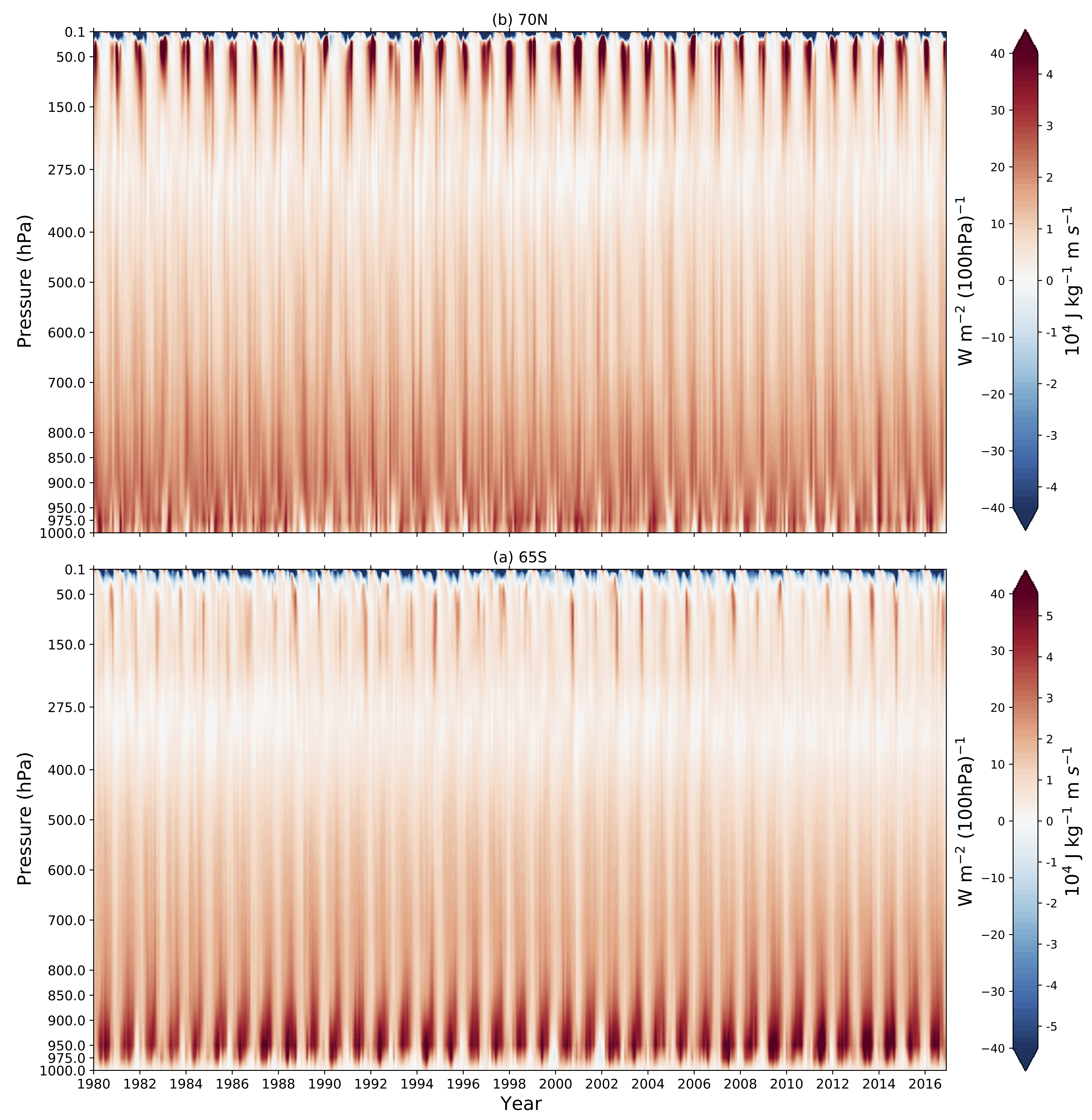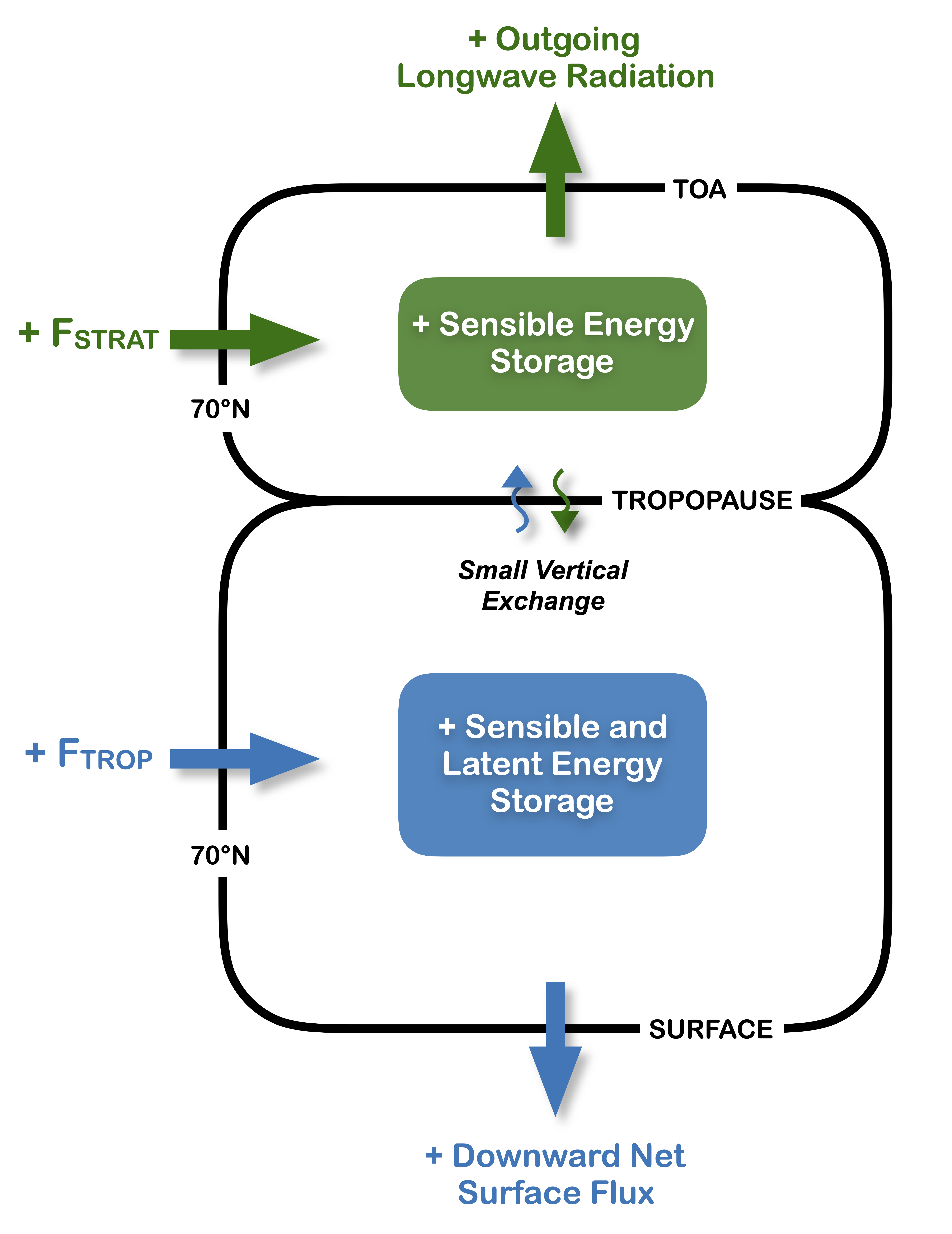New paper on vertical structure of poleward energy flux#
PhD student Chris Cardinale leads this new paper “Stratospheric and Tropospheric Flux Contributions to the Polar Cap Energy Budgets”, now accepted in Journal of Climate.
In this, Chris’s first peer-reviewed publication, we look at the detailed temporal and vertical structure of the poleward fluxes of moist static energy using the NASA-MERRA-2 reanalysis. We are interested in separating the effects of stratospheric and tropospheric circulations on the total poleward energy transport, as well as the differing impacts of these circulations on the energy budget of the polar regions.
We find that the energy transport into the polar caps is strongly bimodal with both stratospheric and tropospheric peaks. The seasonality and interannual variability of the two components are very different, as illustrated below in the “curtain plot”. A major finding is that the stratospheric component explains nearly 25% of the variance of the total energy transport.

Figure 1 from Cardinale et al. (2021): Vertical cross-sections of moist static energy flux (and flux convergence) into the polar caps. Poleward fluxes are defined as positive in both panels.#
We compare composites of two very different types of Arctic winter “surge” events, in which there is an anomalous increase in the poleward energy transport across 70ºN. Stratospheric surges precede well-known Stratospheric Sudden Warming (SSW) events, and are followed by anomalous outgoing longwave radiation to space, with very little impact at the Arctic surface.
In contrast, tropospheric surges are associated with net downward energy flux at the surface, with very little impact on the Top-of-Atmosphere. These results are suggestive of a two-box reasoning in which stratospheric variability is “vented” to space while tropospheric variability is tightly coupled to the warming of the surface.

Figure 8 from Cardinale et al. (2021): Schematic of the energetic pathways in response to an increase in the stratospheric or tropospheric energy flux convergence in the Arctic polar cap.#
The paper is a collaboration between the Rose group and Andrea Lang (University at Albany) and Aaron Donohoe (University of Washington).
The paper now in Early Online Release for the Journal of Climate. A pdf copy of the preprint is also available here.